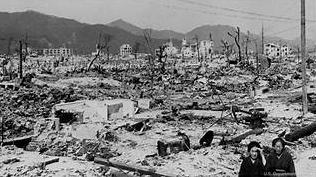We don’t need to imagine a world ravaged by nuclear war – we’re already living in it.
Donald Trump once noted, “If you take a look right now, the ‘nuclear’ word is being mentioned all the time.” Although his remarks might seem self-serving, they captured a growing unease about nuclear weapons that has resurfaced in recent years. Trump, known for his volatile rhetoric, was perhaps the most unstable figure ever to oversee America’s nuclear arsenal. But beyond his presidency, the threat of nuclear war is undeniably back in the global consciousness, fueled by a complex web of international tensions.
The resurgence of nuclear anxiety can be traced to several key developments over the last decade. Among these, the ongoing rivalry between the United States and China has grown increasingly tense, with both nations modernizing their nuclear arsenals. Meanwhile, North Korea’s successful thermonuclear test in 2017 reminded the world of the dangers posed by rogue states. Even traditional nuclear powers like Russia and Israel have demonstrated an alarming willingness to escalate military conflicts, with the ongoing war in Ukraine offering a chilling example of the potential consequences.
Culturally, the nuclear threat has been mirrored in a series of high-profile works in literature and film. Following the 2016 US election, novelists like Hanna Jameson and Mark Doten explored apocalyptic scenarios involving nuclear weapons. Rumaan Alam’s Leave the World Behind, which has now been adapted into a film, presents a haunting meditation on the fragility of civilization in a nuclear age. The success of Christopher Nolan’s Oppenheimer also highlights the public’s heightened concern. The film, which explores the creation of the atomic bomb, resonated deeply with audiences, possibly because of the escalating fears surrounding nuclear weapons.
The success of these cultural touchstones reflects a societal yearning for understanding in a time of growing global instability. HBO’s Chernobyl miniseries, for example, reminded viewers of the devastating legacy of the Soviet nuclear program, a stark reminder that much of Russia’s nuclear infrastructure remains under Vladimir Putin’s control. The increased attention to these topics may be symptomatic of a wider unease that we are once again teetering on the edge of nuclear catastrophe.
Even as the world’s superpowers modernize their nuclear arsenals, the potential for nuclear escalation seems more likely than ever. With countries like India adopting more aggressive militaristic policies, and the unpredictability of world leaders like Putin, the possibility of a nuclear crisis looms large. But perhaps even more unsettling is the realization that we are no longer living in the shadow of potential nuclear war—we are living in its aftermath, shaped by the fear, uncertainty, and existential dread that nuclear weapons have always brought. This ongoing tension underscores the need for global dialogue, de-escalation, and ultimately, a collective reckoning with the weapons that could irrevocably change the world.

